Do Goldendoodles Have a Double Coat?
The thick, fluffy, wavy fur of a typical Goldendoodle is an instant crowd-pleaser. However, some Goldendoodles take after Golden Retrievers in their coat pattern. Goldendoodles are a mix of poodle and Golden Retriever, but those two breeds have very different hair growth patterns.
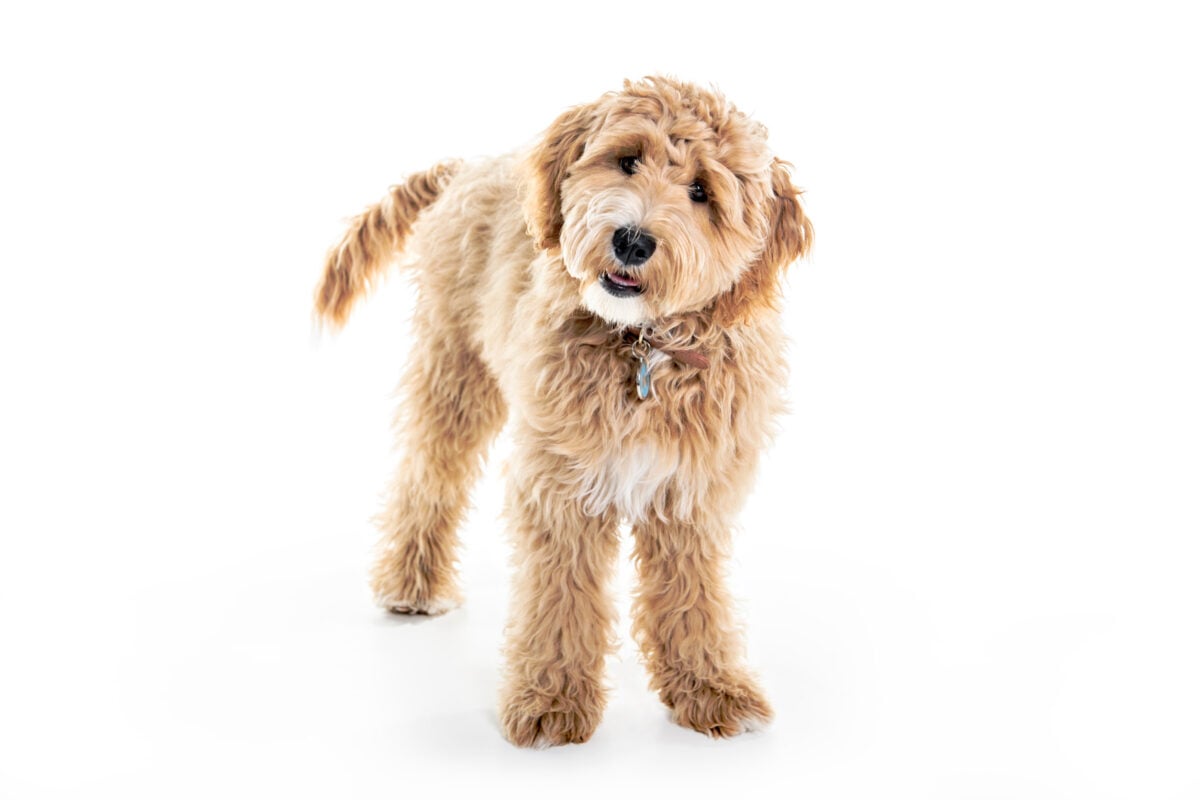
Are Goldendoodles Double Coated?
Most Goldendoodles do not have a double coat since they typically have curly or wavy hair similar to the coat on a poodle. However, some Goldendoodles take after Golden Retrievers in coat growth, in which case they would have both an undercoat as well as guard hairs.
Since Goldendoodle coats fall somewhere in between the poodle and the Golden Retriever, it can be difficult to identify what your pet has. Understanding the origin of your dog, as well as the characteristics of a double coat, will help you care for your pet better.
BONUS TIP: Want to learn more? Check out our users guide to grooming and also our 3 Must-Have brushes for Goldendoodles! You might be surprised to learn you probably have the best daily
Poodles
Poodles do not have a double coat, they have tight curls of hair – not fur. They do not shed any more than a human does, and are considered to be low-allergen.
Goldendoodles that inherit a curly or wavy texture are also low-allergen since the curls trap allergens close to the skin and very little hair is being shed into the environment. Poodles are notoriously high maintenance as their coat requires daily brushing and care.
If your Goldendoodle is F1b or F2b where the Goldendoodle lineage has been backcrossed to a poodle, you are much more likely to see these characteristics in your dog. This generational code is very common and is great for allergy sufferers, but does come with extra grooming responsibility.
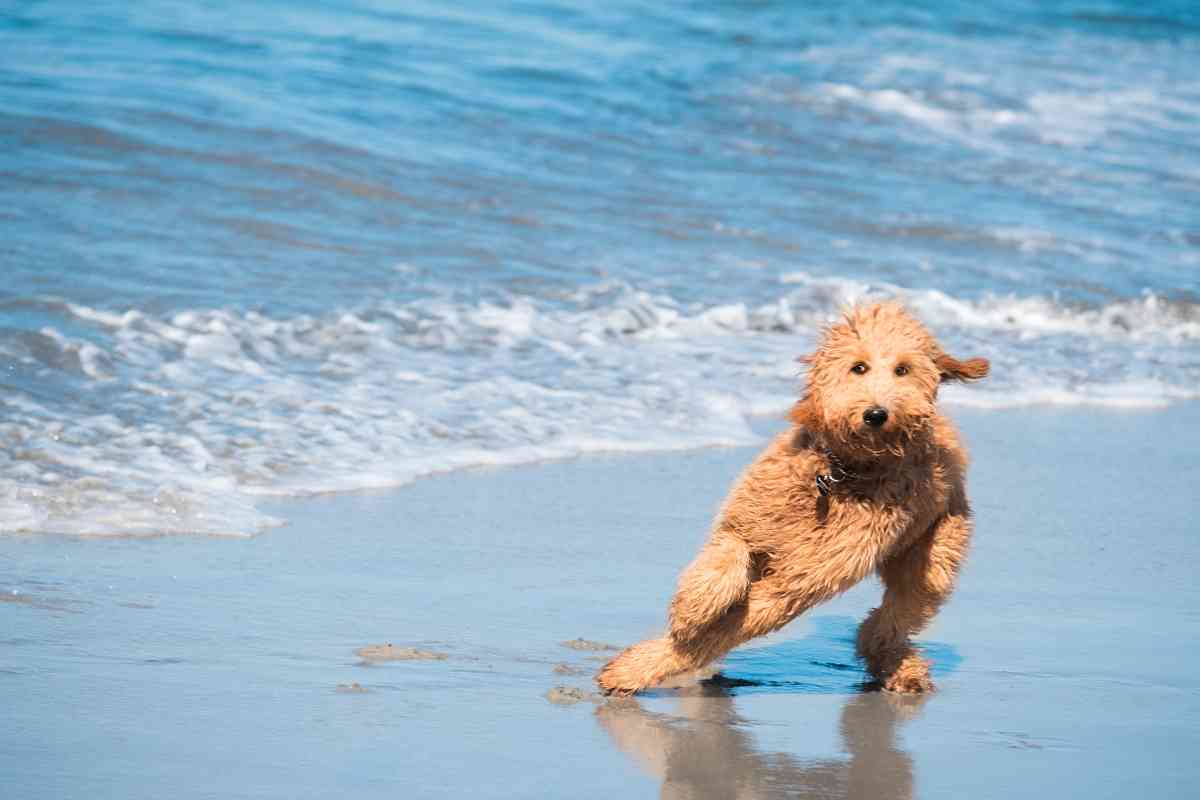
Golden Retrievers
A Golden Retriever’s coat is dense, long, and feathery. Retrievers have fur rather than hair and do have a double coat. Golden Retrievers can not be considered allergy-friendly, as they are constantly shedding. Additionally, they will shed both layers of their double coat once or twice a year.
They are significantly lower maintenance compared to poodles. Retrievers need to be brushed once or twice a week, only more often when they are in a heavy shedding season.
An F1 or F2 Goldendoodle will retain some characteristics from the Golden Retriever, often including the coat color that gives the breeds their names. A true 50/50 split of poodle and Golden Retriever will usually have looser waves and still shed some. Genetics are not completely predictable, making it difficult to say for sure if a Goldendoodle puppy will develop a double coat or not.

Identifying a Double Coat
A double coat is composed of two layers, the short undercoat and a longer coat of stiffer guard hairs. The undercoat layer is made of soft fine hairs that create a dense coat for regulating temperature. The wooly undercoat will keep a dog warm during cold weather and will protect the skin from sun exposure in warmer weather.
The topcoat fur is longer, and the individual follicles are thicker. This is the coat that you can see and pet on your dog and acts as protection for the delicate undercoat.
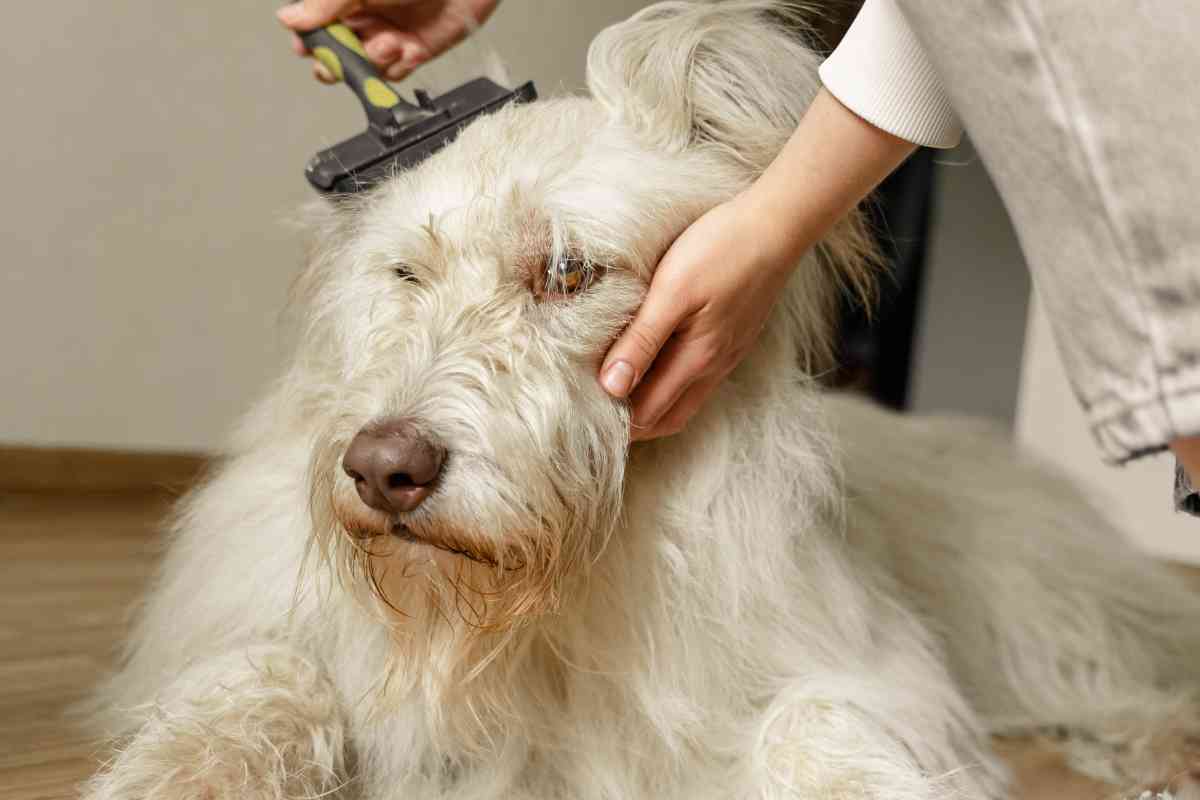
The undercoat on a dog is difficult to identify, especially if that dog has the soft curly pattern of a typical Goldendoodle. As a pet owner, you are responsible for giving your dog the best possible care. This includes being aware of what type of coat they are sporting.
To determine if your Goldendoodle inherited the Golden Retriever double coat, you will need a grooming
Once you have collected a decent amount of fur on your
You can start by checking for distinct length differences. You may notice some of the hairs are significantly longer or shorter than the others. This is not a complete or foolproof method, however, because breakages can obscure the true length of the fur.
In addition to length, you should be checking for texture differences. Are the shorter-looking hairs also softer? Do the longer hairs feel coarse and wiry? If so, your dog likely has a double coat. If you can find two distinct textures of fur, even if the length differences are difficult to spot, you should treat your Goldendoodle’s coat as a double coat.
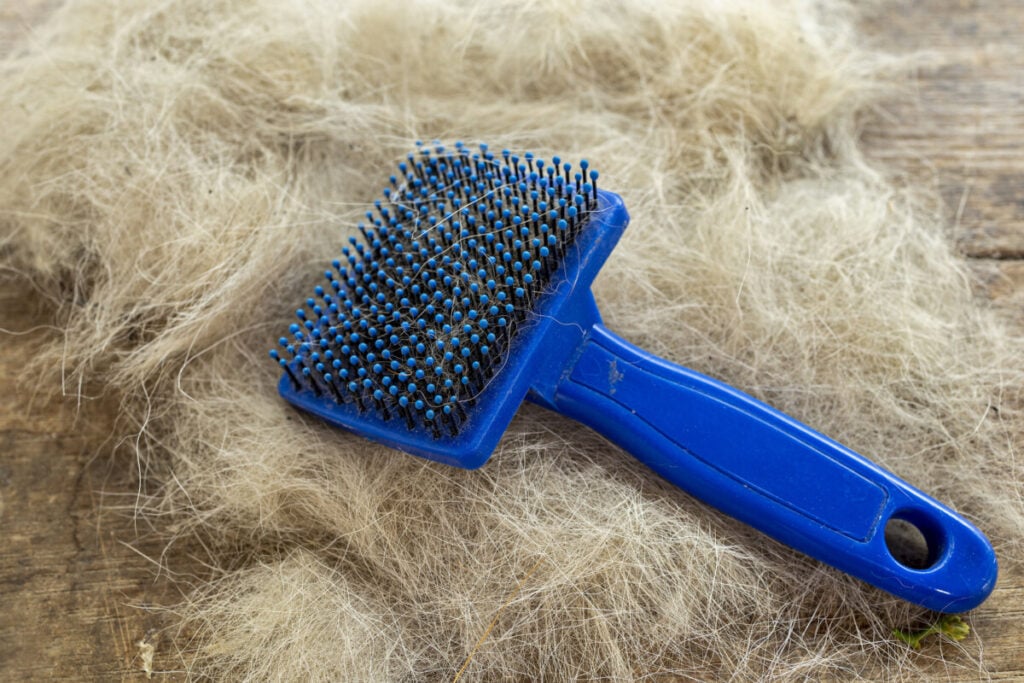
Other factors that can help you confirm if your Goldendoodle takes after the Golden etriever is paying attention to texture and shedding patterns. Compare your dog to a Golden Retriever, then compare it to a poodle.
A looser wave pattern versus a tight curl and more frequent shedding are good indicators that your Goldendoodle is likely double-coated.
These factors combined with the brushing method should give you an accurate picture of your dog’s fur pattern. If you are still unsure, you can always ask your groomer or vet at their next appointment.
Caring for a Double Coat
Tight poodle-like curls are prone to matting from tangles, but having a looser wave pattern does not necessarily prevent your Goldendoodle’s fur from matting. Having an undercoat makes your dog prone to matting in a different way.
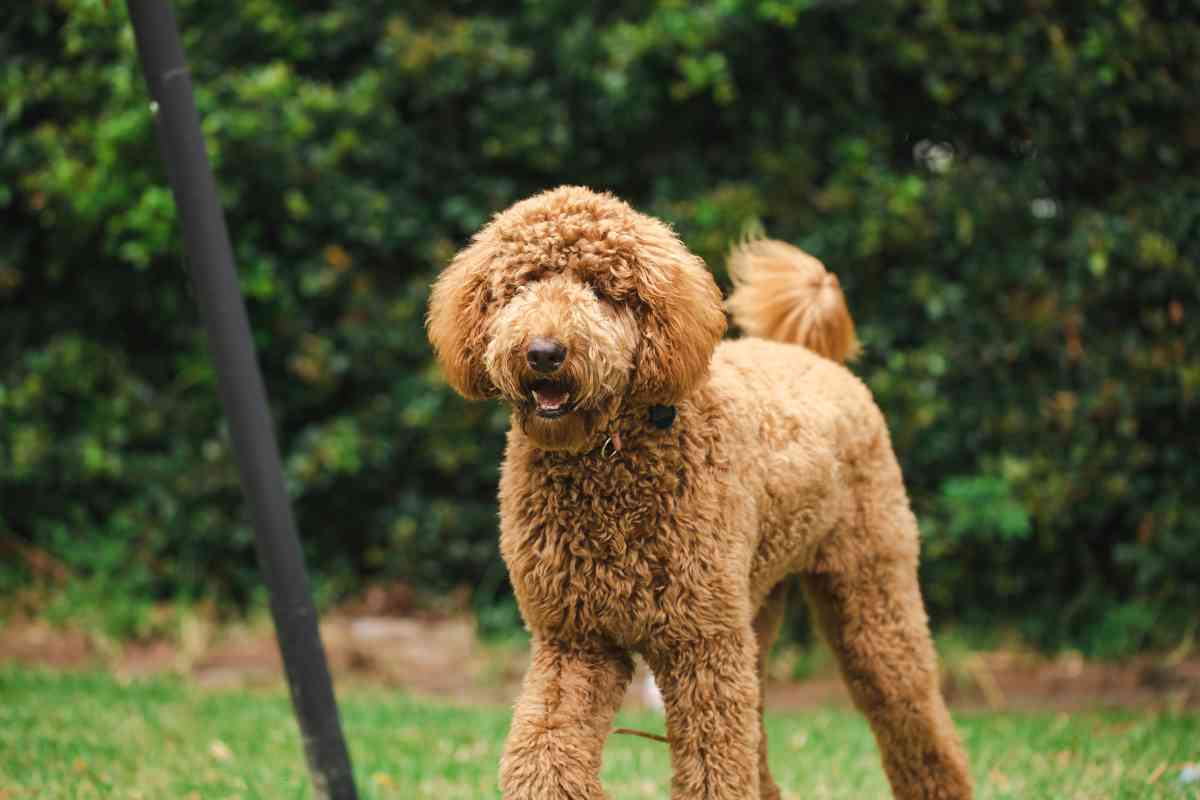
Because they shed more, you need to
The wooly undercoat is also very effective at trapping dirt, which may then cause skin problems. Brushing will help remove most of it, but your double-coated Goldendoodle may need more frequent baths than its single coat brothers and sisters. Check with your groomer to make sure you are not bathing too often, as this could lead to dryness and skin irritation.
A
Do Goldendoodles Need Haircuts
Do Goldendoodles need haircuts? Yes. It’s recommended for Goldendoodles to get a haircut on average, every six weeks.
This will not only keep them looking much better overall, but it will also keep your Goldendoodle’s fur from matting easier, which will happen when they have longer coats.
Goldendoodles need a haircut on average, every six weeks. In the winter you might be able to let it go for a week or two longer depending on how cold it gets where you live, but never let it go more than eight to ten weeks without giving them a trim.
If you’re not sure when to give your Goldendoodle puppy its first haircut, we suggest giving your pup its first haircut by the time it reaches six months of age. Their wavy, thicker, adult fur will start replacing their fluffy puppy fur around five to seven months. When cutting your dog’s hair, you can either take them to a groomer (which can become very costly) or you can do it yourself.
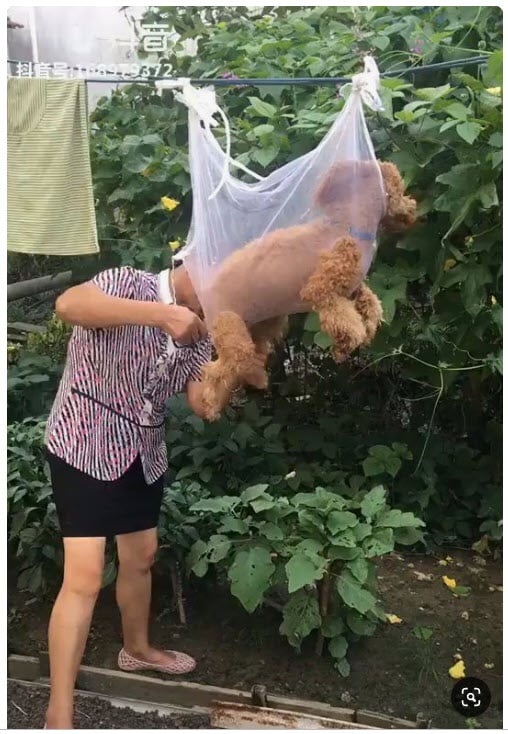
If you do decide to give your dog a haircut, make sure that you’re trimming clean and fully dry fur. You’re going to want to make sure that you detangle and
When trimming their fur, you should cut the length anywhere from one and a half to two inches above their skin. Always remember to trim away the hair blocking the dog’s ear canal; they have big floppy ears where moisture can sometimes be harder to get rid of and that makes a great environment for bacteria to grow, and they can easily get ear infections if not properly groomed.
Since their hair can grow so long, trimming the hair around their eyes so they can see better will be something you want to do as well as targeting inside their ears. It’s crucial not to ever stick trimmers or anything else inside their ear canals.
Conclusion
In conclusion, Goldendoodles can have different coat types, with some resembling poodles and others taking after Golden Retrievers. Most Goldendoodles do not have a double coat, as they typically have curly or wavy hair similar to poodles.
However, some Goldendoodles may inherit a double coat from the Golden Retriever side, consisting of an undercoat and guard hairs.
Determining the coat type of your Goldendoodle can be challenging, but understanding their genetic background and characteristics of a double coat can help you provide appropriate care. Regular brushing is essential to prevent matting and remove trapped hair in double-coated Goldendoodles.
Haircuts are recommended every six weeks to maintain their appearance and prevent matting. Whether you choose to groom your Goldendoodle at home or take them to a professional groomer, it’s crucial to ensure their fur is clean, dry, and properly maintained to promote their overall well-being.